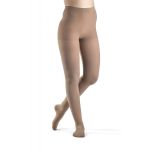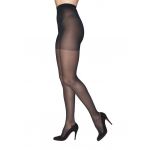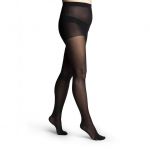Compression Pantyhose
Compression Pantyhose And Stockings For Lymphedema
Panty Hose compression garments are a traditional means of providing compression and support to the abdomen and legs in helping to manage and treat lower extremity Lymphedema, deep vein thrombosis ("DVT") and venous insufficiencies, or for simple swelling, tired and aching feet.
••••••••••••••••••••Please note: With the passage of the Lymphedema Treatment Act (LTA), effective January 1, 2024, Medicare began to pay for lymphedema products for those who have Medicare B coverage and meet certain other coverage criteria. Please visit our website page covering the details of the Lymphedema Treatment Act to obtain more information about how Medicare pays for lymphedema garments, wraps, and bandages.
Medicare Pays For Lymphedema Products
Please note: Thanks to the Lymphedema Treatment Act, which took effect on January 1, 2024, Medicare began to pay for lymphedema products for those who have Medicare B coverage and meet certain other coverage criteria. Please visit our website page covering the details of the Lymphedema Treatment Act to obtain more information about how Medicare pays for lymphedema garments, wraps, and bandages.
Compression Pantyhose
Compression pantyhose are usually worn during the secondary, or "maintenance" phase of Lymphedema treatment after completion of complete decongestive therapy, or "CDT". Panty Hose compression garments are made in a variety of sizes and colors, and are especially designed to fit the various anatomical structures of the waist and legs.
Compression pantyhose are rated as to the amount of compression they apply, and it is important to choose the correct compression level that is required. Compression is measured in units referred to as millimeters of mercury or "mmHg", and should selected for treatment as follows.
While compression pantyhose may be difficult to put on and take off, there are an array of donning and doffing aids which will help the patient to easily use them. Also be sure to protect your investment by using detergents that are specially formulated for compression garments.
••••••••••••••••••••••••••••••••••••FAQs About Compression Pantyhose
Compression pantyhose play an important role in managing lymphedema in the legs and pelvic area. Below are some of the most frequently asked questions about compression pantyhose.
- What Are Compression Pantyhose
- How Do Compression Pantyhose Help With Lymphedema
- How Do I Choose The Right Level Of Compression In Pantyhose
- What Is The Best Way To Put On Compression Pantyhose
- What Is The Best Way To Take Off Compression Pantyhose
- How Long Should I Wear Compression Pantyhose Each Day
- How Long Do Compression Pantyhose Last
- Can Compression Pantyhose Be Washed
- Do I Need A Prescription To Get Compression Pantyhose
- Do Insurance Companies Cover Compression Pantyhose
- Does Medicare Cover Compression Pantyhose
Compression pantyhose are full-length hosiery that is designed to provide consistent pressure on the legs, hips, and lower abdomen. Compression pantyhose can help improve blood flow, reduce fluid retention, and prevent the accumulation of lymph fluid.
Compression pantyhose apply graduated pressure that starts out tighter at the ankle and gradually lessens toward the thighs and hips. This compression helps move lymph fluid upward, out of your legs and toward the center of your body.
Compression pantyhose come in various compression levels (see above). Your healthcare provider will recommend the correct pressure level, based on the severity of your lymphedema and your medical history. The higher the mmHg level, the higher the compression.
Because compression pantyhose fit snugly by design, they can be challenging to put on. It can be helpful to use rubber gloves, which can give you a better grip and protect the fabric of the pantyhose. To put on compression pantyhose, sit down, gather the pantyhose up to your toes, and gradually unroll them up your legs, ensuring that the pantyhose are smooth and without any twists or wrinkles.
Compression pantyhose can be tricky to remove. To take off compression pantyhose, sit down, start at the upper part of the pantyhose and gently roll or fold the fabric toward your knee. Do not tug sharply on the pantyhose or try to pull them down in one go, or you might damage the fabric. Instead, be patient, and once you reach your knee, you might want to stand to continue rolling the pantyhose down your calves and to your ankles. Sit back down and carefully roll or slide the pantyhose over your heel and off one foot, then do the same with the other heel and foot.
Your healthcare provider should make specific recommendations. In general, however, compression pantyhose are worn during the day and removed at night.
With proper care, compression pantyhose should last about 3-6 months with daily wear.
You will need to follow the specific instructions from the manufacturer of your compression pantyhose. In general, however, most compression pantyhose can be washed in mild detergent, rinsed thoroughly, and air-dried. You should avoid fabric softeners and bleach, because they can degrade the material.
No. You can order all of our compression pantyhose without a prescription.
Some insurance plans cover compression pantyhose, with a prescription. Check with your insurance provider for specifics about your coverage.
Starting in January 2024, thanks to the Lymphedema Treatment Act, Medicare began covering compression products, including compression bandaging systems and supplies that are used during the initial decongestion phases and maintenance phases of lymphedema treatment. Click here to read more about the Lymphedema Treatment Act and how to order compression pantyhose.
Please note that all of the information above is for general informational purposes. Please consult your healthcare provider for specific information and personalized recommendations for your situation.
For more information about our compression pantyhose for lymphedema, please call (800) 700-1032, or e-mail info@bandagesplus.com





